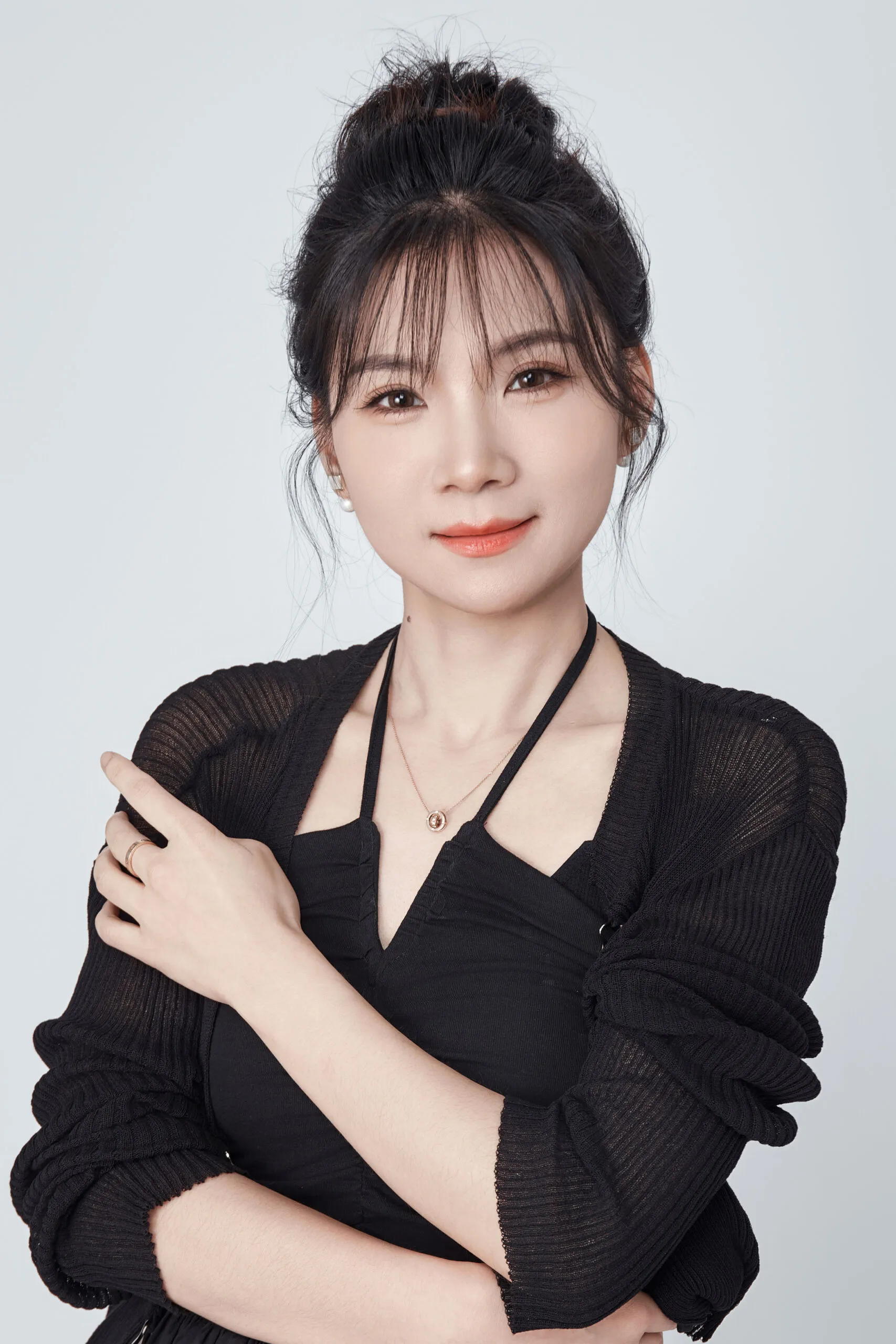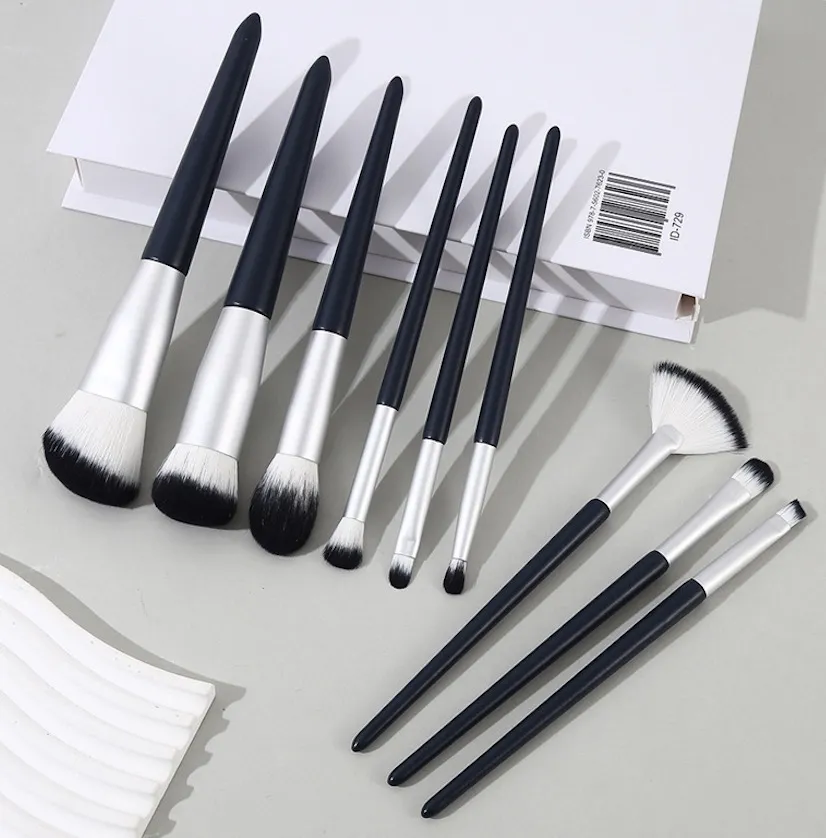Sourcing premium brushes1 feels overwhelming. You want luxury quality for your brand, but top retail names aren’t your only option. I’ll show you how to get that same quality.
The best goat-hair makeup brush brands are Hakuhodo, Chikuhodo, Koyudo, Wayne Goss, and Sonia G. They are chosen for their ultra-soft, first-cut hair2, consistent density, and superior powder pickup. These brands set the benchmark for OEM and private label manufacturing.
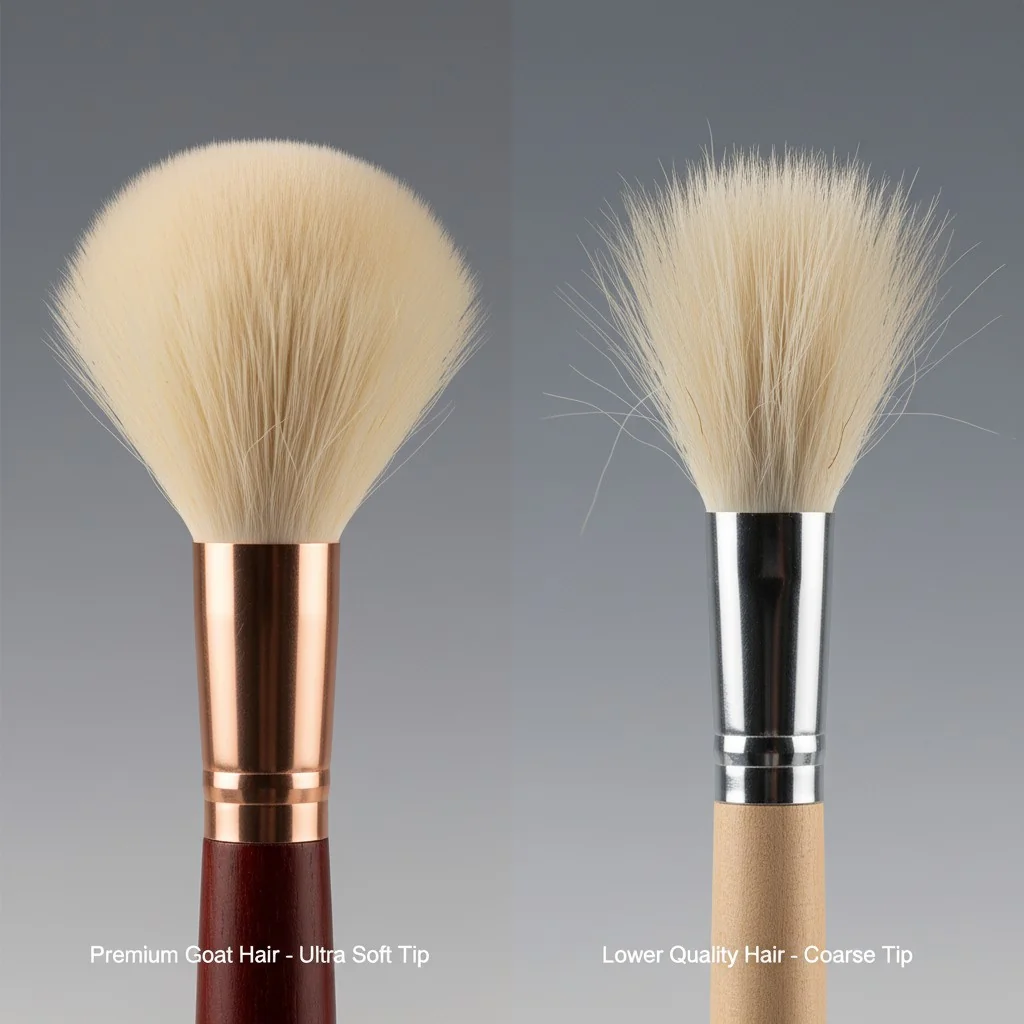
When I work with brand founders like you, the question "who is the best?" comes up a lot. It’s a smart question. But for a brand owner, the real question is, "How can I get that ‘best brand’ quality for my own product line?" The secret isn’t buying retail; it’s understanding the specifications that make those brushes great. I’ve spent my career on factory floors and in boardrooms, and I can tell you that premium quality is a formula. Let’s break down that formula so you can build brushes that rival the very best in the world.
All goat hair brushes are made from 'first-cut' hair.Faux
No, many mass-market brushes use blunt-cut hair, which is cheaper but feels prickly. 'First-cut' means the natural, tapered tip of the hair is preserved, which is essential for softness.
Goat hair has natural cuticles that help it pick up and blend powder products effectively.Vrai
Unlike smooth synthetic fibers, the microscopic scales on goat hair grab onto powder, allowing for better pickup and a more diffused, airbrushed application.
Hair Grades Decoded: What do Saikoho and Sokoho mean for performance?
Your customers feel the difference between a good brush and a great one, but they can’t name why. You need to. The secret is in the hair grade.
Japanese goat hair grades3 like Sokoho (high quality) and Saikoho (softer, finer) determine a brush’s softness and powder control. Higher grades have naturally tapered, "first-cut" tips that feel smoother and blend powders more beautifully than blunt-cut hair.
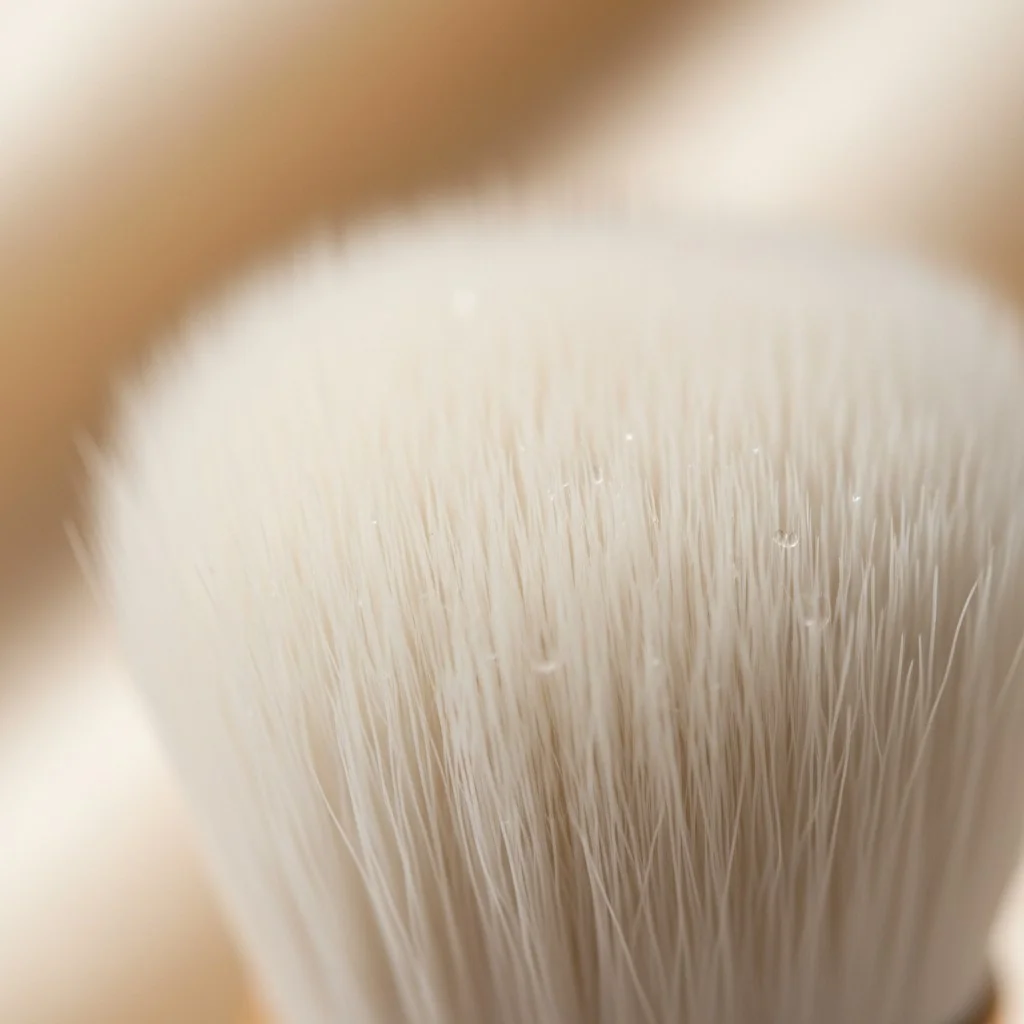
When I first started working in a brush factory, I learned to feel the difference between hair grades with my eyes closed. It’s something you never forget. Think of it like the thread count in luxury sheets. While all goat hair is good for powders, the grade changes everything.
Understanding the Key Terms
- Sokoho4: This is a high-quality grade of goat hair. It’s soft, durable, and offers excellent performance for a wide range of powder applications. It’s a fantastic workhorse for any premium brush line.
- Saikoho5: This is a step up in luxury. The hairs are finer and softer than Sokoho, with an even more delicate, tapered tip. This grade is perfect for finishing powders and blush on sensitive skin because it provides a sheer, diffused wash of color.
- First-Cut vs. Blunt-Cut: This is critical. "First-cut" means the hair is harvested with its natural, uncut tip intact. This tip is incredibly soft and tapered. Blunt-cut hair has been trimmed, creating a flat, sharp edge that can feel prickly and doesn’t blend as well. For a luxury feel, you must specify "first-cut."
Saikoho hair is best for applying liquid foundation.Faux
Saikoho's fine, porous nature makes it ideal for powders. It would absorb too much liquid product, leading to waste. Synthetic brushes are better for creams and liquids.
The taper of a brush hair affects how it applies product.Vrai
A natural taper allows the brush to pick up powder and release it gradually and evenly, creating a soft, blended finish. A blunt tip deposits product more harshly.
Kumano Benchmarks: How can you replicate a "best brand" finish?
You’ve tried a Hakuhodo or Chikuhodo brush and thought, "This is it. This is the quality I want." That feeling is not magic; it’s the result of strict manufacturing specifications.
To replicate the finish of top Kumano brands6, you must specify the exact hair grade (e.g., Saikoho), mandate "first-cut" hair, define the head mass and density, and require hand-shaping methods that protect the delicate tips from being trimmed or heat-damaged.
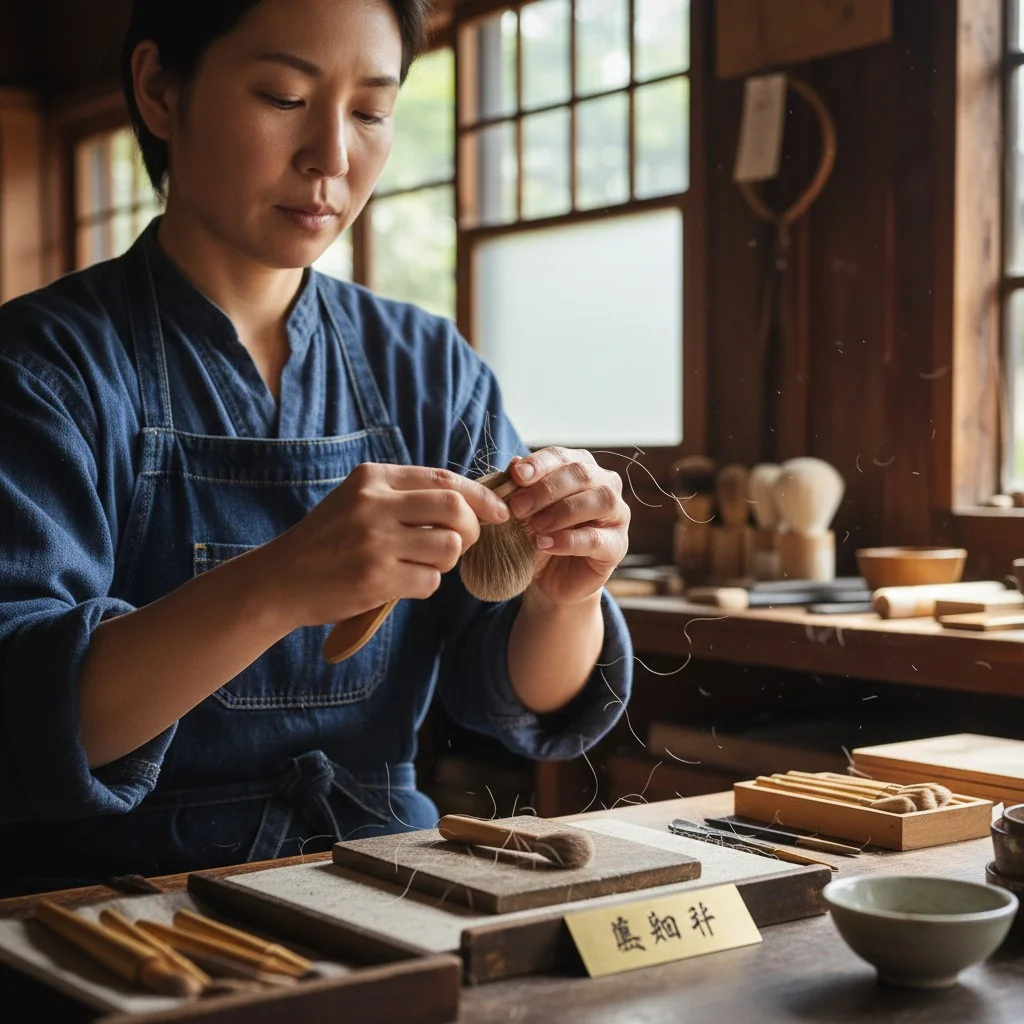
The top brands from Kumano, Japan are famous for a reason: consistency. They control every variable. As a brand owner, you can do the same with your OEM partner. You don’t need to be located in Kumano to achieve that quality. You just need to write a purchase order that leaves no room for error. I help my clients do this every day. We translate that "luxury feel" into a technical document. It includes the hair grade, the blend ratio if you’re mixing hairs, the exact weight of the brush head, and the shaping process. This turns a subjective feeling into an objective, repeatable standard.
Here is a table that shows how to turn benchmark observations into actionable OEM specs:
| Benchmark Spec | Performance Goal | OEM Specification to Request |
|---|---|---|
| Hair Spec | Ultra-soft feel, flawless blending | Grade: Saikoho, Cut: 100% First-Cut Only |
| Density | Effortless powder pickup, no patchiness | Head Mass: Target 2.5g (±0.1g tolerance) |
| Shape | Precision application, no splaying | Method: Hand-shaped in a mold, no post-shaping trim |
| Durability | Minimal shedding, long-lasting | Ferrule: Double-crimped, epoxy resin adhesive |
Any factory can produce Kumano-level quality if you ask them to.Faux
False. It requires specialized artisan skills, access to high-grade materials, and a deep commitment to quality control that not all factories possess. You must vet your supplier's capabilities.
Specifying head mass (weight) is a good way to control brush density.Vrai
True. By setting a target weight for the brush head with a tight tolerance (e.g., ±0.1g), you ensure every brush in your bulk order has the same consistent density and feel.
Ethics and Compliance: What does "cruelty-free" really mean for goat hair brushes?
Your customers care about animal welfare, and so should your brand. But "cruelty-free7" is one of the most misunderstood terms in the beauty industry, especially for natural hair brushes.
For makeup brushes, "cruelty-free" logos like Leaping Bunny typically certify that no animal testing occurred. It does not usually cover the sourcing of animal hair. For that, you must request supplier declarations and chain-of-custody documents to ensure ethical harvesting practices.
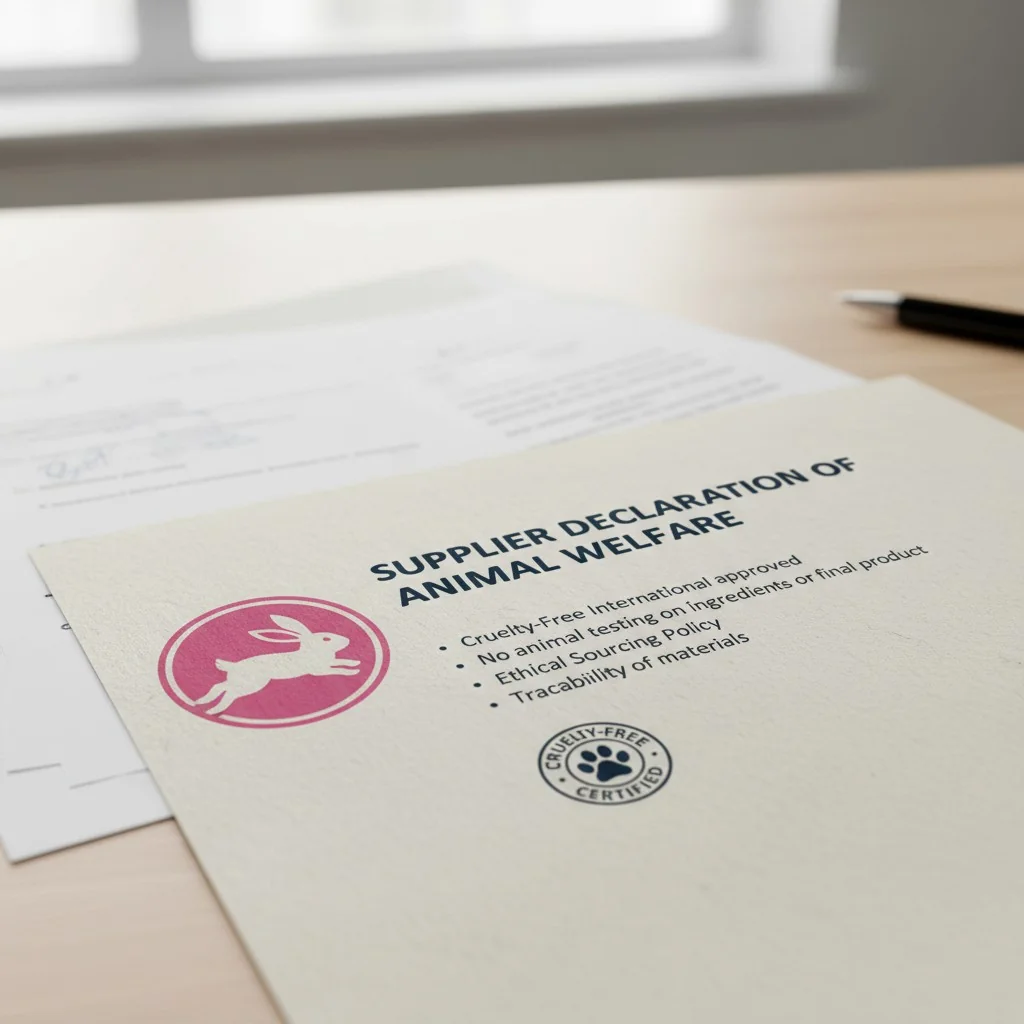
This is a pain point I see constantly. A brand wants to make an ethical claim, but their supplier can’t provide the right paperwork. It puts your brand’s integrity at risk. Here’s the simple truth: the "cruelty-free" claim on a finished product almost always refers to the final product not being tested on animals. It’s a separate issue from how the raw materials, like goat hair, are obtained. The hair for brushes is typically a byproduct of the goat fiber industry, collected during regular shearing, similar to wool. However, to be sure, you must do your own due diligence. Ask your manufacturer for a "Supplier Declaration" that outlines their animal welfare8 policies. For brands that want to make this a core part of their identity, I always recommend offering a clearly labeled vegan line with high-performance synthetic fibers alongside your natural hair options. This gives your customers a clear choice and protects your brand from making unsubstantiated claims.
Goat hair for brushes is obtained by harming the animal.Faux
Generally, no. The hair is collected by shearing or combing the goats, which is a necessary part of their grooming and does not harm them. However, brands should still verify the welfare standards of the source farms.
A 'vegan' brush and a 'cruelty-free' brush are the same thing.Faux
Not necessarily. A 'vegan' brush contains no animal-derived components. A 'cruelty-free' brush simply means it wasn't tested on animals; it could still be made from natural animal hair.
QC You Can Feel: How do you prevent bulk-order surprises?
There is nothing worse than approving a perfect sample, only to receive a bulk order where half the brushes feel different. This happens when a factory’s quality control9 (QC) is a checklist, not a physical test.
To ensure consistency from sample to bulk order, implement measurable QC tests. These include a shedding test (e.g., under 5 loose hairs per 50 strokes), a wash durability test (e.g., minimal splaying after 10 washes), and a density check.
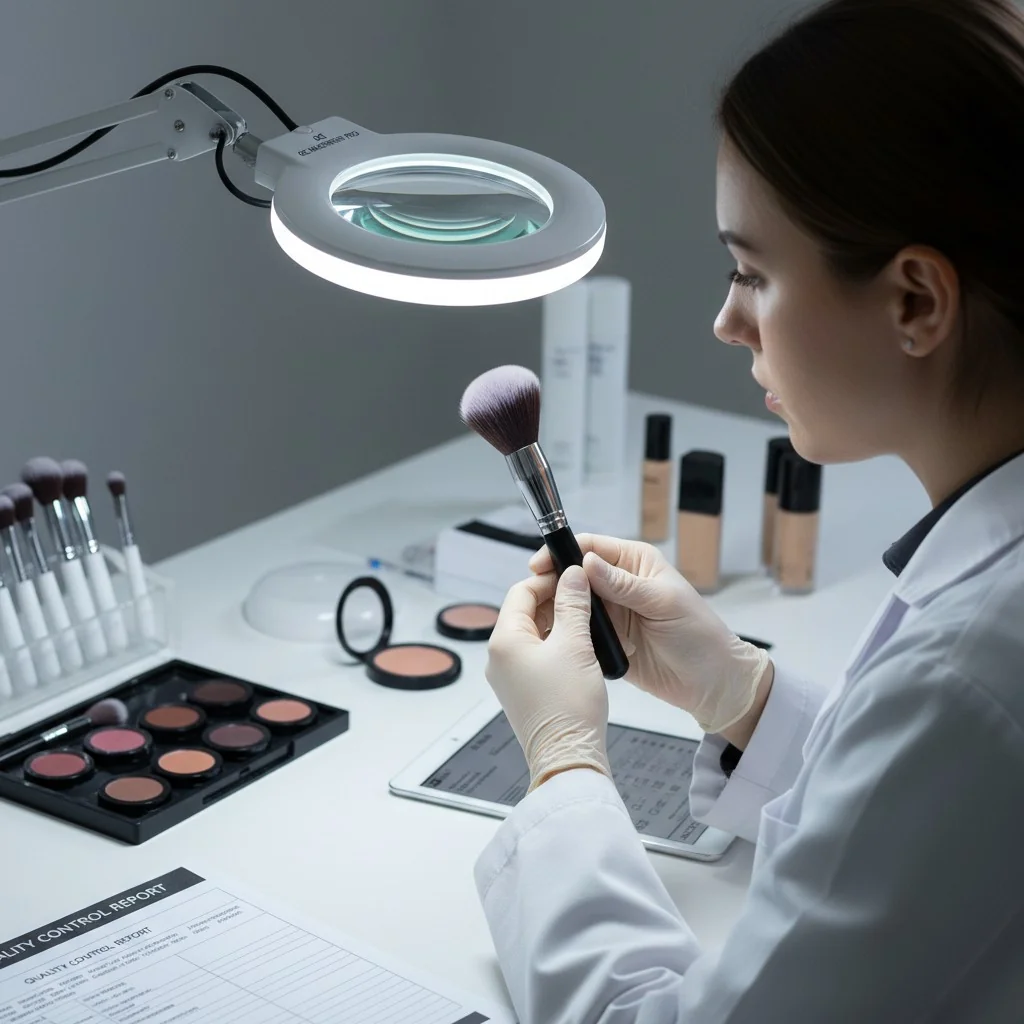
On the factory floor, I saw how easy it is for standards to slip on a large production run. That’s why your purchase order needs to include a QC protocol that anyone can measure. Don’t accept vague promises like "high density" or "low shedding." Define them. For my clients, we create a simple but effective testing plan.
Your Pre-Shipment QC Checklist:
- Shedding Test: Take a brush and stroke it firmly 50 times against a clean, dark cloth. Specify the maximum number of hairs allowed to fall out. (e.g., "fewer than 5 hairs").
- Wash Durability Test: Gently wash a sample brush 10 times with mild soap and water. Check if the ferrule is still tight and measure how much the brush head has splayed or lost its shape.
- Density Uniformity Test: Roll the brush handle between your palms. You shouldn’t feel any gaps or voids in the hair. For even stricter control, specify a weight tolerance for the brush head.
- Tip Integrity Check: Use a magnifying glass or a phone’s macro camera to inspect the tips. You should see the fine, natural tapers of first-cut hair, not blunt, chopped-off ends.
This turns quality into something you can see and count, protecting your investment and your brand’s reputation.
A good brush should never shed a single hair.Faux
It's normal for a new, handmade natural hair brush to shed a few loose hairs during the first few uses. However, continuous and excessive shedding indicates poor construction.
All factories perform the same level of QC checks.Faux
QC standards vary dramatically between factories. Reputable suppliers have multi-step inspection processes, while others may only do a quick visual check at the end. You must specify your requirements.
Conclusion
The "best" goat hair brush isn’t about a brand name. It’s about having the right specifications for hair, build, and QC, and a partner who can execute them perfectly.
Références
-
Explore the advantages of premium brushes for achieving flawless makeup application and long-lasting results. ↩
-
Understanding first-cut hair is essential for selecting high-quality brushes that provide superior softness and performance. ↩
-
Learn about hair grades to make informed choices for your makeup brush collection, ensuring quality and performance. ↩
-
Explore the unique qualities of Sokoho goat hair and why it’s favored for premium makeup brushes. ↩
-
Discover the luxurious properties of Saikoho goat hair and its applications in high-end makeup brushes. ↩
-
Discover the craftsmanship and quality behind Kumano brands, known for their exceptional makeup brushes. ↩
-
Understand the implications of cruelty-free labeling in the beauty industry and how it affects product sourcing. ↩
-
Understand the importance of ethical sourcing practices for goat hair to maintain brand integrity and customer trust. ↩
-
Learn effective quality control measures to ensure consistency and high standards in makeup brush production. ↩

